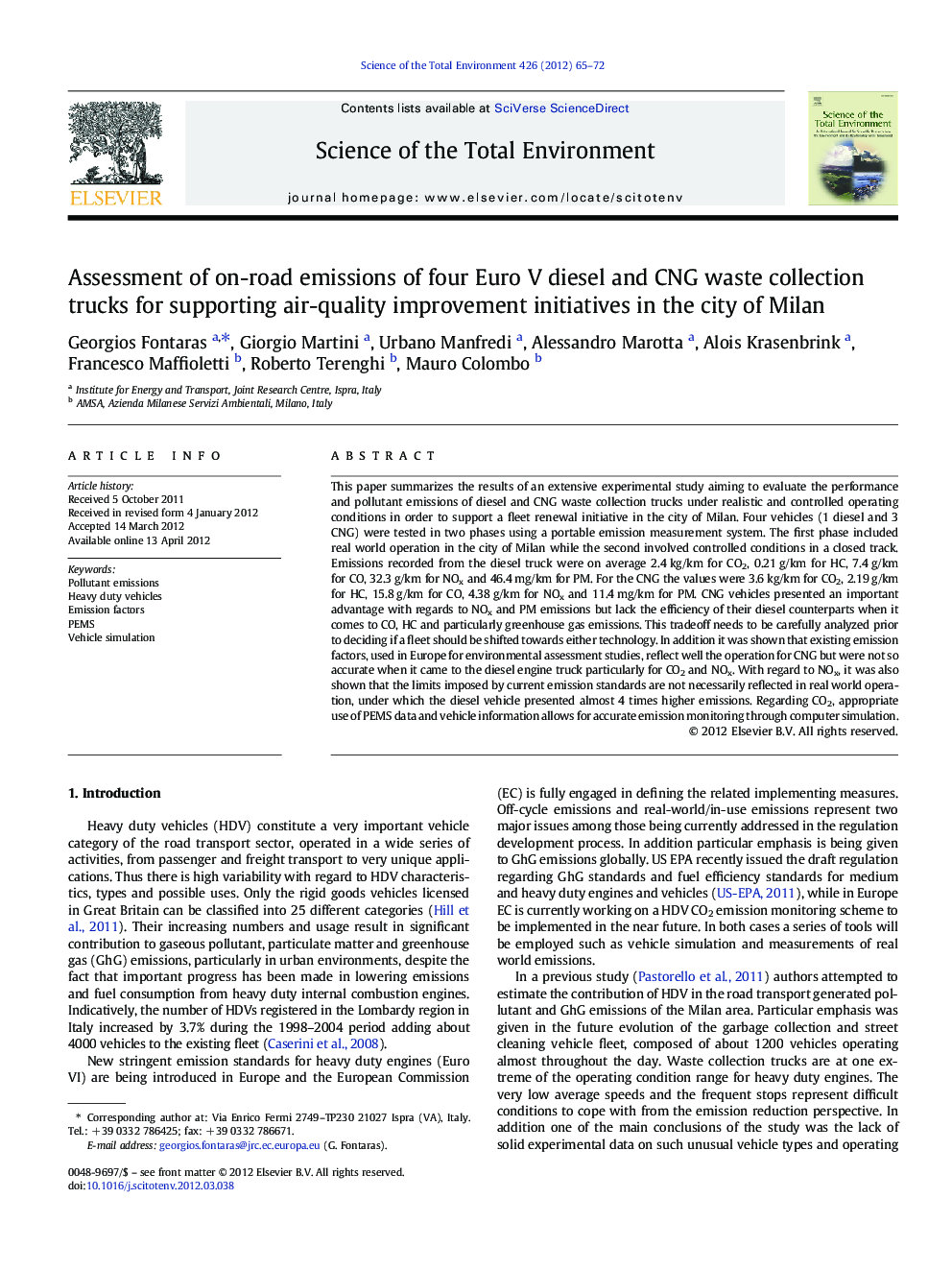| Article ID | Journal | Published Year | Pages | File Type |
|---|---|---|---|---|
| 4429455 | Science of The Total Environment | 2012 | 8 Pages |
This paper summarizes the results of an extensive experimental study aiming to evaluate the performance and pollutant emissions of diesel and CNG waste collection trucks under realistic and controlled operating conditions in order to support a fleet renewal initiative in the city of Milan. Four vehicles (1 diesel and 3 CNG) were tested in two phases using a portable emission measurement system. The first phase included real world operation in the city of Milan while the second involved controlled conditions in a closed track. Emissions recorded from the diesel truck were on average 2.4 kg/km for CO2, 0.21 g/km for HC, 7.4 g/km for CO, 32.3 g/km for NOx and 46.4 mg/km for PM. For the CNG the values were 3.6 kg/km for CO2, 2.19 g/km for HC, 15.8 g/km for CO, 4.38 g/km for NOx and 11.4 mg/km for PM. CNG vehicles presented an important advantage with regards to NOx and PM emissions but lack the efficiency of their diesel counterparts when it comes to CO, HC and particularly greenhouse gas emissions. This tradeoff needs to be carefully analyzed prior to deciding if a fleet should be shifted towards either technology. In addition it was shown that existing emission factors, used in Europe for environmental assessment studies, reflect well the operation for CNG but were not so accurate when it came to the diesel engine truck particularly for CO2 and NOx. With regard to NOx, it was also shown that the limits imposed by current emission standards are not necessarily reflected in real world operation, under which the diesel vehicle presented almost 4 times higher emissions. Regarding CO2, appropriate use of PEMS data and vehicle information allows for accurate emission monitoring through computer simulation.
► Investigated diesel and CNG Euro V waste collection vehicles for municipal use ► NOx-GhG emission trade-off should be considered prior to fleet renewal initiatives. ► NOx and CO emissions exceeded the emission standard values over realistic conditions. ► Current emission factors reflect adequately CNG but need update for diesel trucks. ► Simulation successfully used for CO2 monitoring, opens path for regulatory initiatives
